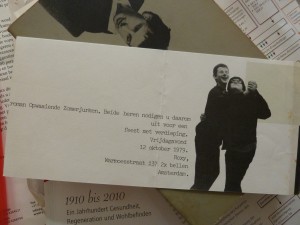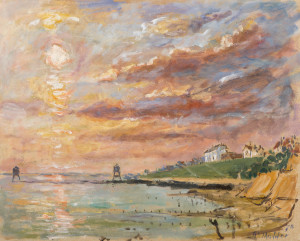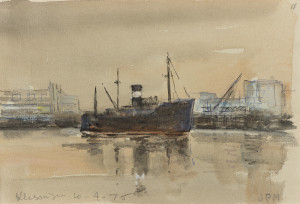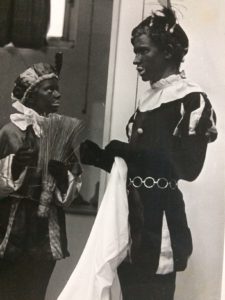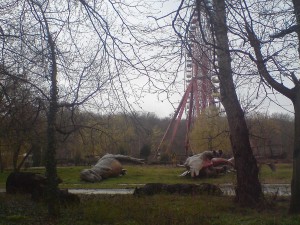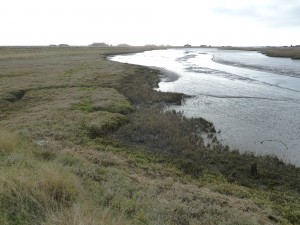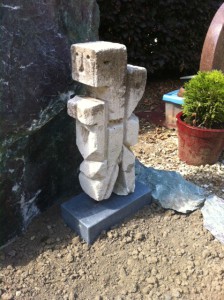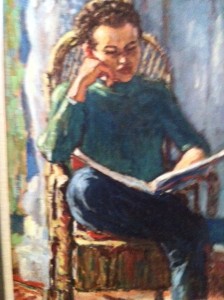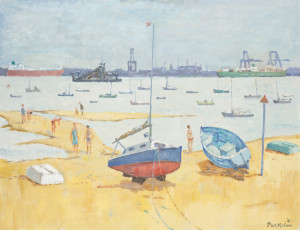
Piet Mulder, Harwich Beach, oil on canvas, 1983
UPDATE 2023 – Four years ago we celebrated that hundred years earlier the Dutch painter Piet Mulder (1919-2001) was born, in Sint Jansteen, on the south-west border of the Netherlands. Lots of festivities took place. A well illustrated book was made about his work as a painter: Piet Mulder – Schilder van het Betuws landschap (De Weideblik, 2019), and more than 10 exhibitions were on show in the Netherlands.
Four years ealier, in june and july 2015 a large exhibition of 50 of Piet Mulder’s paintings of Harwich and Dovercourt was already on view on all five floors of the High Lighthouse in Harwich (UK). And his children are still planning a second exhibition in Harwich, with a selection of all his work made between 1945 and 2001.
In this article Piet Mulders son Reinjan Mulder, an artist and critic himself, is explaining how and why his father bought in 1975 his studio in England. (For a Dutch translation of this article, please click here.)
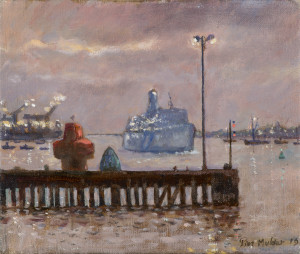
Piet Mulder, Nightboat near Trinity Pier, Harwich, oil on canvas, 1982
‘The best watercolors include (…) Piet Mulder’s Low Tide in Harwich, with scruffy small boats, seemingly floating on mud…’ – William Zimmer in the New York Times on the exhibition of Dutch Marine Painting in the Mystic Maritime Gallery.
Reinjan Mulder
In 1975, for my father, the Dutch painter Piet Mulder (1919-2001), a new life began. Having had his studio in the heart of the Netherlands for 30 years, he now bought a second studio in Dovercourt, on the east coast of England, with a view of the sea that stretched for miles.
England was not new to him. Following the liberation of the Netherlands in May 1945, Piet Mulder had emerged emaciated from his hiding place to be immediately taken on as a structural steel design engineer, working for the British Royal Engineers who remained behind in the Netherlands. It was their job to repair the important north-south rail connections. The Dutch railway network had been largely destroyed during the war. Of the 21 major railway bridges there had been in 1940, only six were still safe for trains by 1945.
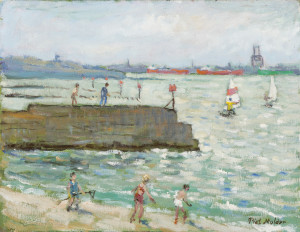
Piet Mulder, Dovercourt Beach, oil on board, 1985
At 26, Piet Mulder’s secondment to the Royal Engineers was a double liberation. Not only was he delivered from German occupation, he had something to do too, among a team of reserved Englishmen who turned out to have quite different customs than the harsh Germans.
Since those days in May 1945, Piet Mulder had looked on England as the better country, where the landscape had not been contaminated by the great evil. Every time he arrived in England by boat, it was as if he was shaking something off, he told his children, because this was a place ‘they’ had never penetrated: the (meer…)
